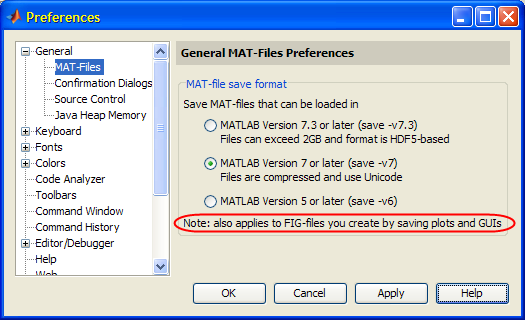
This holds true for both pure-HDF files (saved via the hdf and hdf5 set of functions, for HDF4 and HDF5 formats respectively), and v7.3-format MAT files. For this reason, HDF5 files are typically larger and slower than non-HDF5 MAT files, especially if the data contains cell arrays or structs. Moreover, Matlab’s HDF5 implementation does not by default compress non-numeric data (struct and cell arrays). HDF5 uses a generic format to store data of any conceivable type, and has a non-significant storage overhead in order to describe the file’s contents.

The following table summarizes the available options for saving data using the save function: save option Note that Matlab’s 7.3 format is not a pure HDF5 file, but rather a HDF5 variant that uses an undocumented internal format. Matlab 6 and earlier did not employ automatic data compression Matlab versions 7.0 (R14) through 7.2 (R2006a) use GZIP compression Matlab 7.3 (R2006b) and newer can use an HDF5-variant format, which apparently also uses GZIP (level-3) compression, although MathWorks might have done better to pay the license cost of employing SZIP ( thanks to Malcolm Lidierth for the clarification). This format is publicly available and adaptors are available for other programming languages ( C, C#, Java). MAT is Matlab’s default data format for the save function.

Today’s article will show little-known tricks of improving save‘s performance. This data can later be loaded back into Matlab using the load function. Matlab’s built-in save function is an easy and very convenient way to store data in both binary and text formats. But we often don’t need or want to use such low-level functions. fwrite is normally used to store binary data in some custom pre-defined format. Two weeks ago I posted an article about improving fwrite‘s performance.


 0 kommentar(er)
0 kommentar(er)
